Living in Her Own Shadow: Calamity Jane's Time in Montana

There have been a handful of people from the American West who were catapulted to fame in the nineteenth century and form the bedrock of our lore of that time. Many of these became household names due to writers and reporters of the time feeding exaggerated and sometimes outright fictitious accounts of their exploits to an Eastern public hungry for romanticized accounts of the wild, untamed West. These would include names such as Wild Bill Hickok, Wyatt Earp, Jesse James, Buffalo Bill Cody, Annie Oakley, and in particular, Martha Canary, better known as "Calamity Jane." What better way to tap into the nineteenth-century fascination of the perceived free, nonconformist Western lifestyle than a woman who dressed in men's clothes and did stereotypical men things, like army scouting, drinking whiskey and smoking cigars?
 In the twentieth century, many of these "legends" found their way onto the silver screen where these myths were perpetuated for another generation. Their portrayal bore little resemblance to their actual lives. Doris Day's musical, Calamity Jane, is just such an example. But who really was Calamity Jane, and how does Montana history intersect with hers?
In the twentieth century, many of these "legends" found their way onto the silver screen where these myths were perpetuated for another generation. Their portrayal bore little resemblance to their actual lives. Doris Day's musical, Calamity Jane, is just such an example. But who really was Calamity Jane, and how does Montana history intersect with hers?
When it comes to Calamity Jane in particular, it is often difficult to thresh the truth from the legend. What we do know is she was probably born in 1856. She spent her early childhood on a farm in north central Missouri. It would be reasonable to assume she learned some of her horsemanship there. By late 1864, financial issues caused her parents to sell the farm and head to Montana's gold fields.
According to Martha, the trip to Virginia City took about five months. She claimed to often accompany the men on hunting and scouting trips away from the main wagon train. During that time she would further develop her skills on the horse, and maybe with a rifle, that she would draw upon in later life.
The Canary family arrived in Alder Gulch some time in 1864. Unprepared for the inflated cost of living of a frontier mining town, like many, they were soon out of cash and nearly destitute. They lived in Nevada City, just down the road from Virginia City. It is evident that the family quickly fell on hard times. An article in the Virginia City Newspaper from December 31, 1864 relates an account that is almost certainly of Martha: "Three little girls, who state their name to be Canary appeared at the door of Mr. Fergus on Idaho Street soliciting charity." James Fergus was one of the Madison County commissioners in charge of providing for the poor. The article continues: "The eldest carried in her arms her infant sister, a baby of about 12 months of age." Martha was described as wearing only a "calico slip" for warmth in the dead of an unusually cold winter. "Mrs Fergus, Mrs Castner and Mrs Moon kindly provided them with food and some clothing." They "returned to Nevada (City) where they have existed for some time."
There is some evidence that her parents were not exactly considered "pillars of the community." The article goes on to say that the girls' parents were "inhuman brutes who have deserted their poor, unfortunate children." It was "the most flagrant and wanton instance of unnatural conduct on the part of the parents." Furthermore, the father "is a gambler in Nevada" and the mother was "a woman of the lowest grade."
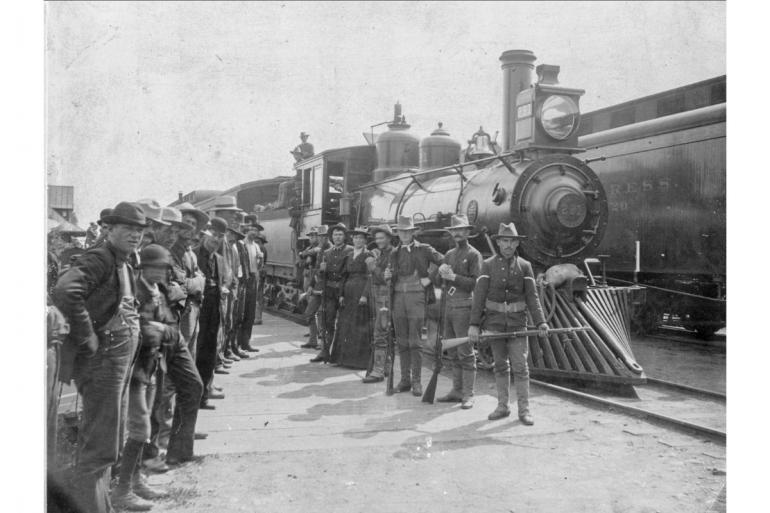
Despite all this, the Canary family somehow survived and apparently moved on to another mining town to the north, Blackfoot City. Martha stated that it was here that her mother died in the spring of 1866. According to Martha, that summer, her father and the six Canary children moved to Salt Lake City. The following year, 1867, she recalls her dad died, leaving her, the eldest at 12 years of age, orphaned with five younger siblings and probably destitute. Little is known about what happened to her brothers and sisters—perhaps adopted while she struck out on her own, though there is evidence that she kept at least sporadic contact with them. Such was the crucible that would forge who Martha Canary would become.
It would be nearly 30 years before she would return to Montana. In those intervening years she had been "discovered" by reporters visiting General Crook's troops in the Black Hills in 1875. A surviving photo of her from then shows a 19-year-old Martha definitely in men's clothing, reposing on a large rock. Stories appeared in Eastern newspapers of the young woman tagging along with the soldiers. She was described as wearing men's clothes, and the articles included exaggerated claims of horsemanship, marksmanship, and of being an active participant as a scout in some of the Indian Wars. These fanned her persona to legendary levels amongst an Eastern populace hungry for the romanticized accounts of the "wild and free" West.
Starting in 1878, the prolific dime novelist, Edward L. Wheeler, featured the character Calamity Jane as his heroine in his Deadwood Dick stories of the time. In some stories, Calamity Jane is portrayed by Wheeler as Deadwood Dick's friend and lover, while in others they are adversaries. She is killed by the author at least twice and gives birth to a son. Her notoriety grew by leaps and bounds. By the time she returned to Montana, Martha had already become the legendary "Calamity Jane," virtually a household name by then.
Martha was 40 when she returned to Montana semi-permanently in 1896, though she did make the occasional brief visit to the Treasure State. For example, while in Billings, she posed with soldiers called in to restore order during the Northern Pacific railroad strike of 1894. She had also spent a short time in Miles City. Whenever she showed up in Montana cities, the local newspaper was always keen to announce her presence and supposed past exploits. People knew when Calamity Jane was in town. She thrived on the attention and would often rely on her reputation to get free drinks in exchange for sharing colorful stories about her past.
Before returning to Deadwood in 1901, Calamity Jane split most of her Montana time between Billings and Livingston. However, she was never in one place for very long; in between her stints in those two cities, she bounced around many Montana towns. The railroad had now matured, opening up easy access to many communities. From Billings, she, her husband at that time, Clinton Burke, and daughter, Jesse (born 1887), hopscotched through the Montana towns of Livingston, Helena, Anaconda Deer Lodge, Castle City and Judith Basin. She would often use her fame to solicit free passage.
Castle City is now a ghost town, but in November of 1896 it was a bustling silver mining town of about 2,000. Martha and her husband opened up a restaurant and Jesse attended school there. However, as was typical of Martha's entrepreneurial exploits, it wasn't long before there were problems and it was time to move on. In late November of that year, the local newspaper, the Castle Whole Truth, reported that Martha and her husband were arrested on the charge of "absconding debtors." They were soon released and headed out of town (again).
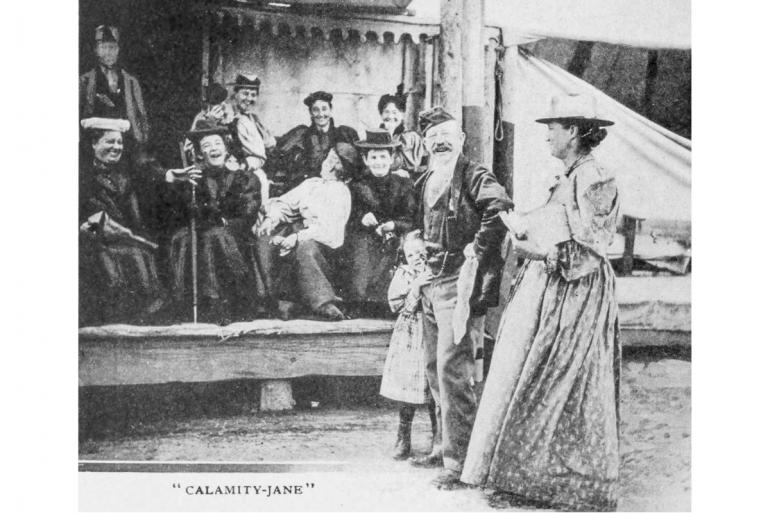
Most of the time, when Martha did secure work, it was usually in menial tasks: she worked as a washerwoman, and sometimes as a cook. These jobs provided but meager wages. However, Martha's main source of income during this time came from cashing in on her widespread celebrity status. She sold her autobiography, Life and Adventures of Calamity Jane, by Herself. This was a short pamphlet that she had printed in great volume, full of exaggerations, half truths and outright invention. However, it played right into her reputation; she sold them wherever she traveled, and people lapped it up.
Back in Billings again, she began making frequent trips into the new Yellowstone National Park. In 1897 she was issued "Special Permit No. 1" and spent her time there selling her booklet and postcards of herself to any and all tourists she could find. There is a surviving photo of her there talking with tourists with a bundle of her pamphlets in her hand.
By the 1890s, law and civilization had come to the West. It was no longer the "wild West" of her youth, and she often found the new societal norms at odds with her independent, freewheeling character. Well before her move back to Montana, Martha had developed quite a thirst for whiskey, and was also quite fond of cigars. She had commented once that had she not spent her money so freely (on whiskey), she would be a millionaire.
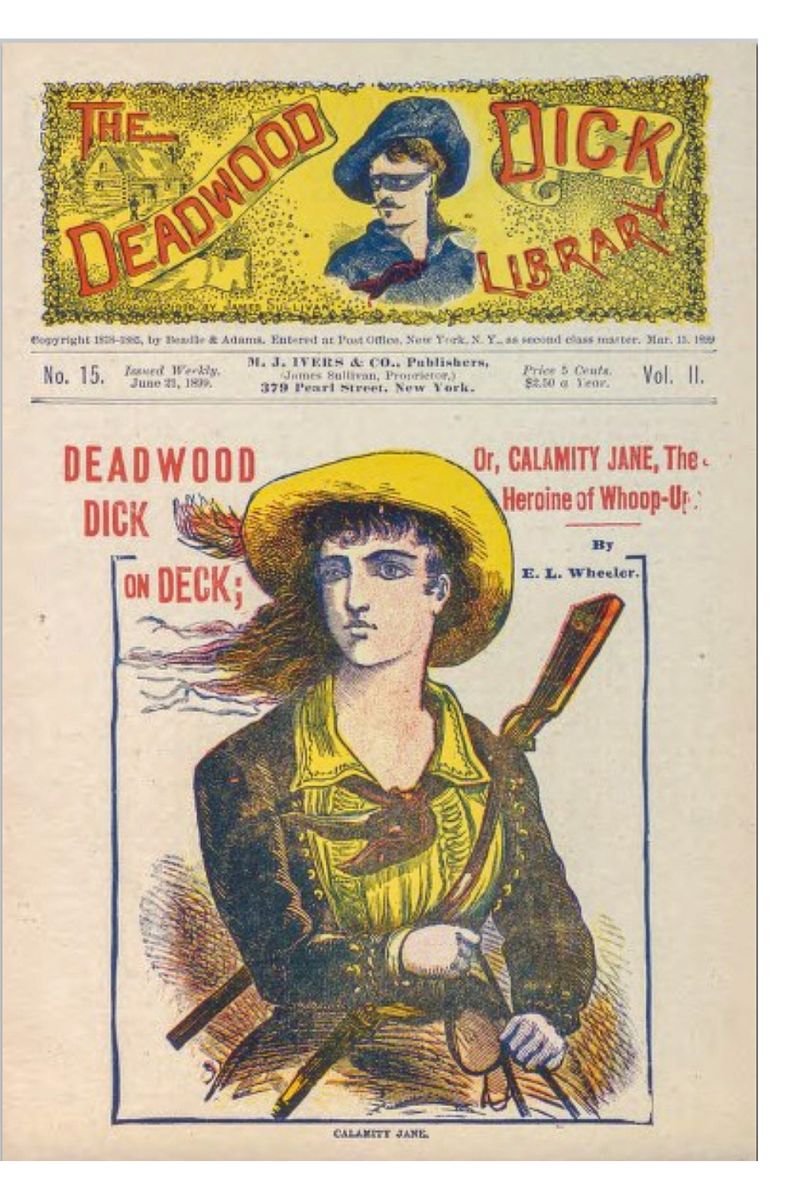 On one occasion, she strode into a busy, festive saloon, ordered everyone out but a couple people and proceeded to make her point by shooting out the bar's large mirror. She then ordered drinks at her "guests'" expense. The next day she rode into the same saloon on a borrowed horse to order drinks. It was said that these were "merely an exhibition of individual freedom." She was also known to have quite a mouth on her. Displaying the English of an uneducated woman at the best of times, it didn't take much for her to descend into some of the worst swearing and vulgar language of the time—especially when she was drinking—which was often.
On one occasion, she strode into a busy, festive saloon, ordered everyone out but a couple people and proceeded to make her point by shooting out the bar's large mirror. She then ordered drinks at her "guests'" expense. The next day she rode into the same saloon on a borrowed horse to order drinks. It was said that these were "merely an exhibition of individual freedom." She was also known to have quite a mouth on her. Displaying the English of an uneducated woman at the best of times, it didn't take much for her to descend into some of the worst swearing and vulgar language of the time—especially when she was drinking—which was often.
Despite her flaws, she was known to have been a very generous, caring person. There are accounts of her nursing sick and injured soldiers back to health while she was a camp "mascot." One of the best examples of this was her caregiving during the smallpox outbreak in Deadwood during the late 1870s where she looked after many of the stricken. Perhaps because of this, the town of Deadwood chipped in to buy her a plot next to her friend, Wild Bill Hickok, when she passed away there in 1903 at the age of 47.
There is much about the legend of Calamity Jane that is not exactly not true. However, we do know enough about her to know that she was a "people person." She was fond of storytelling and was good at spinning great yarns for the pure sake of entertainment. She was generally a kind person, but above all, she lived life on her terms, fiercely individualistic and totally outrageous!


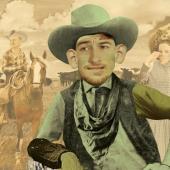
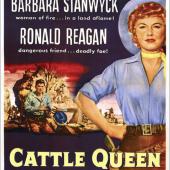

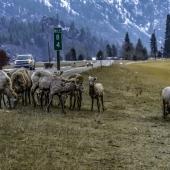

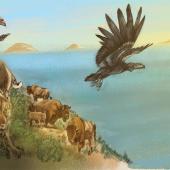



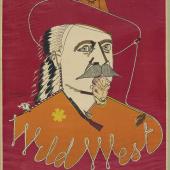
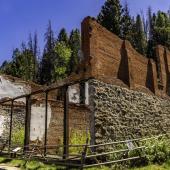
Leave a Comment Here